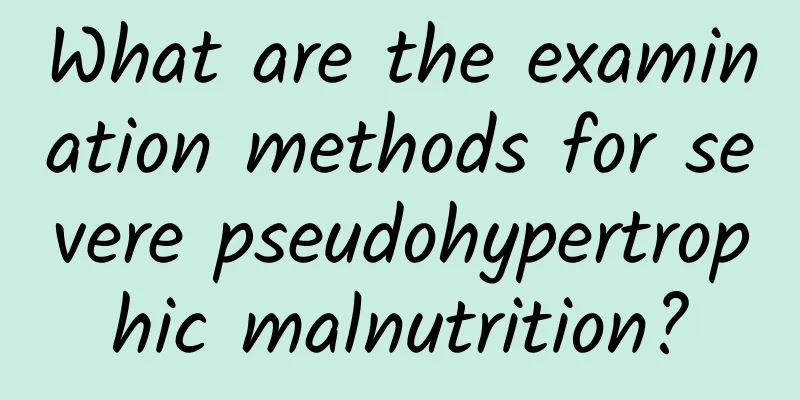Are there any symptoms of patent ductus arteriosus in newborns?

|
Patent ductus arteriosus (PDA) is a congenital heart disease. Some children may not have obvious symptoms, but in severe cases, they may experience symptoms such as shortness of breath, feeding difficulties, and slow weight gain. Treatments include medication, surgery, and interventional therapy, and the specific choice depends on the severity of the disease. 1. Symptoms of patent ductus arteriosus in newborns The symptoms of patent ductus arteriosus in newborns vary depending on the severity of the condition. Mild PDA may not show obvious symptoms and is only discovered through heart murmurs during physical examinations. Children with moderate to severe PDA may experience symptoms such as shortness of breath, rapid heartbeat, feeding difficulties, excessive sweating, and slow weight gain. In severe cases, heart failure or lung infection may occur, and medical attention is required in a timely manner. 2. Causes of patent ductus arteriosus in newborns The occurrence of PDA is related to many factors. Genetic factors may play a certain role, and children with a family history of congenital heart disease are at higher risk. Environmental factors such as infection during pregnancy, drug exposure, and radiation may also increase the risk of disease. In terms of physiological factors, premature infants have a higher incidence rate because the ductus arteriosus is not completely closed. Certain pathological conditions such as hypoxia and acidosis may also lead to PDA. 3. Treatment of patent ductus arteriosus in newborns Treatments for PDA include medication, surgery, and interventional therapy. Drug treatment: Commonly used drugs include indomethacin and ibuprofen, which relieve symptoms by promoting closure of the ductus arteriosus. Surgical treatment: For children whose condition is seriously ill or whose medication is ineffective, surgical ligation of the ductus arteriosus can be performed. Interventional treatment: The occluder is implanted through catheter technology to close the arterial duct, which is less invasive and has a quick recovery. 4. Daily care and precautions For children with mild PDA, parents need to closely observe their breathing, heartbeat and feeding conditions, and conduct regular follow-up. Feeding can be done in small amounts and multiple times to avoid overexertion. Keep indoor air circulation to prevent infection. For children receiving treatment, they need to follow the doctor's instructions for postoperative care, avoid strenuous activities, and have regular follow-up visits. The symptoms and treatment of patent ductus arteriosus in newborns should be determined according to the specific situation. Parents should pay close attention to the symptoms of the child, seek medical treatment in time and follow the doctor's advice for treatment and care to ensure the healthy growth of the child. |
<<: How long does it take to treat hemolytic jaundice in newborn babies?
>>: What causes Kawasaki disease
Recommend
Children with allergic rhinitis cough all year round
When children have allergic rhinitis and perennia...
Which department should I go to for acute laryngitis in children?
As the saying goes, illness comes from the mouth,...
How to check for breast milk diarrhea
How to check if there is breast milk diarrhea? Al...
What are the indicators of liver function for neonatal jaundice? What are the tests for neonatal jaundice?
Neonatal jaundice is a common neonatal disease in...
Diarrhea Syndrome Recipe for Children
There are many types of diarrhea, and different t...
Does hand, foot and mouth disease in children have an incubation period?
Hand, foot and mouth disease in children has an i...
What are the causes of hypokalemia and how to treat hypokalemia
Hypokalemia is a disease with a relatively high i...
How to help babies with phlegm
When the throat is damaged by viruses and bacteri...
What virus is polio?
Polio is caused by the polio virus, an acute infe...
What is the fastest way to supplement calcium? Eating more of these 6 foods can help supplement calcium
Eating sesame paste, dried shrimps, seaweed, must...
Symptoms of Kidney Disease in Children
There are many symptoms of nephrotic syndrome in ...
Are there any symptoms of patent ductus arteriosus in newborns?
Patent ductus arteriosus (PDA) is a congenital he...
Is ADHD treatment expensive?
Is the cost of ADHD treatment high? ADHD is a com...
Prevention knowledge of pneumonia in children
Every parent hopes that their children can grow u...
Will tonsillitis in children cause fever? What are the dietary methods for treating tonsillitis?
What is the diet for children with tonsillitis? T...









